Secrets Of Quipu – One Of The Most Mysterious Phenomena That Existed In Odd Number Of Dimensions
A. Sutherland - AncientPages.com - The Incan Empire, which stretched for over 2000 miles from the north to the south and had an estimated 10 million population - was the largest in pre-Columbian America.
An example of a quipu from the Inca Empire, currently in the Larco Museum Collection. Image credit: Claus Ableiter - CC BY-SA 3.0
To run the empire, the Inca had a sophisticated and organized government. Yet they had no written language but a curious invention, a form of non-verbal communication written in an encoded language similar to the binary code used by modern computers.
A quipu (or 'khipu' - (in Quechua' knot') was a series of strings with knots. The number of knots, the size of the knots, and the distance between knots conveyed meaning.
Each sovereign Inca formed an ayllu or "gens" of his descendants to preserve the memory of his deeds in quipus, traditions, and songs learned by heart. It is fascinating to see what details may be recorded on these cords, for which there are masters like our writing masters.
Quipu in the Museo Machu Picchu, Casa Concha, Cusco. Pi3.124 - CC BY-SA 4.0.
Gary Urton, professor of anthropology at Harvard University, has re-analyzed the complicated knotted and decorative strings of the Inca - decorative objects called 'quipu,' which is not only a way of binding strings but also their length, twisting the cord, and finally the color and type of yarn (to perform kipu Incas used the llama or alpaca hair.)
The system - good and very accurate - was traditionally handed down from fathers to sons, with all recorded past events, repeating the story of them many times, over and over again, until they were all finally memorized for future generations.
Quipus were complex assemblies of knotted ropes used in South America as a data storage device and played an essential role in the Inca administration. Only a few specialists could use and decipher them. Their meaning remains a mystery, but color, the relative position of knots, knot types, and rope length were used to encode categorical and quantitative variables.
The oldest known Quipu is 4600 years old.
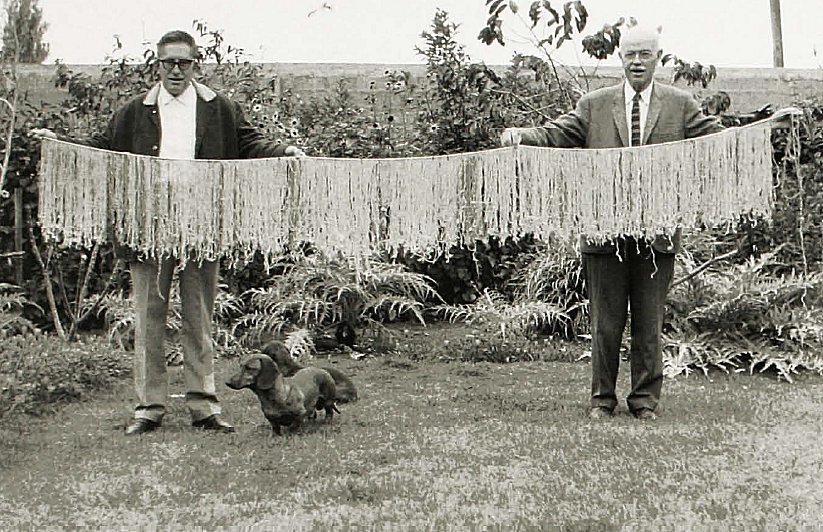 The longest known quipu. Photo credit: P. Dauelsberg
The longest known quipu. Photo credit: P. Dauelsberg
Unfortunately, in the late 16th century, quipus were still being used by Peruvians until the Roman Catholic Church decreed they were "the devil's work" and had most of them destroyed.
Urton discovered they contained a seven-bit binary code capable of conveying more than 1,500 separate information units.
Already, in the 1920s, historians demonstrated that the knots on the strings of some quipu were arranged in such a way that they were a store of calculations, a textile version of an abacus.
"The Incas had never acquired the art of writing, but they had developed an elaborate system of knotted cords called quipus. These were made of the wool of the alpaca or the llama, dyed in various colors, the significance of which was known to the magistrates.
The cords were knotted in such a way to represent the decimal system and were fastened at close intervals along the principal strand of the quipus. Thus, an important message relating to the progress of crops, the amount of taxes collected, or the advance of an enemy could be speedily sent by the trained runners along the post roads..." (Hiram Bingham, the American explorer who found the ruins of Machu Picchu in 1911, wrote in 'Lost City of the Incas.')
Unfortunately, only a few 'quipu' arrangements survived to the present time. The truth is that most of the copies were burned. When the Spaniards conquered the Inca State, the Catholic Church ruled that 'quipu' are the work of Satan and, as such, must, therefore, be destroyed, and so the Spanish conquistadors did in the 16th century.
Approximately 200 of them, dating no earlier than about 650 AD, have been found and still can be analyzed.
Today, the Quipu is considered the world's first three-dimensional language, and deciphering the Inca's encoded writings can be compared to decrypting ancient Egyptian hieroglyphs.
In 2005, the American magazine "Science" published a sensational discovery that the 'quipu' system was not only memorizing numbers but probably non-numeric data - geographical names, names, and more.
With the 'quipu' system, the Inca could also perform complicated calculations, which sufficed to organize the whole empire's economy. However, some believe it was more than a mere calculating device.
In 1996, a manuscript called Historia et Rudimenta Linguae Piruanorum came to light in Italy among the family possessions of a Naples historian.
This fascinating document - supposedly written in the early 17th century by Jesuits - contains a fragment of 'quipu' and explains how Quipu was used to encode spoken language. According to the manuscript, "ideograms" or symbols with well-known meanings from Incan art were used as either phonograms (to represent sounds) or logograms (to denote words).
In 'The Ancient Civilizations of Peru,' J. Alden Mason (among other researchers) suggests another purpose of 'quipu,' namely - a historical record of the whole empire.
The following example demonstrates three segments from a level II cord (UR068) and a segment from a level III cord (UR067), laid out such that the summation of level II numbers match the values in the same relative positions on the level III cord.
Some Chinese chronicles mention certain emperors' wish to replace the ideographic script with one based on knots.
It indicates the existence of links between pre-Columbian America and Asia.
According to Baron Nordenskiold, an expert from Sweden, 'writing need not be the only way expressing thought.' Nordenskiold believed that 'quipu' might represent prophecies and horoscopes as well as mathematical calculations.
Modern mathematicians consider the Inca knots as one of the most mysterious phenomena that can occur in a vast number of dimensions!
Some of the simplest kinds of knots have been already deciphered. It has yet to be found a universal method to decipher all the sacred 'quipu' records of the Inca.
Many discoveries are yet to be made, and time will tell what secrets quipus hold. The use of the "quipu" for accounting purposes has been predominantly attributed to the Inca culture of Peru; however, documented evidence shows that early Hawaiians and ancient Chinese used it much earlier.
Written by A. Sutherland - AncientPages.com Staff Writer
Updated on Nov 1, 2023
Copyright © AncientPages.com. All rights reserved. This material may not be published, broadcast, rewritten or redistributed in whole or part without the express written permission of AncientPages.com
Expand for referencesReferences:
Sze Arthur, Quipu
Urton, Gary. Inka history in knots
The New York Times, Untangling an Accounting Tool and an Ancient Incan Mystery
More From Ancient Pages
-
 Puzzle Of The Bull Rock Cave – Ancient Mass Grave Remains Unexplained
Featured Stories | Mar 12, 2018
Puzzle Of The Bull Rock Cave – Ancient Mass Grave Remains Unexplained
Featured Stories | Mar 12, 2018 -
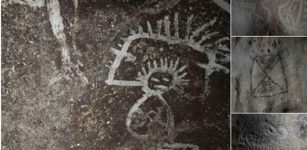 Secrets Of Mona’s Caves: Rock Art Reveals Ancient People Were Ahead Of Their Time Long Before The Arrival Of Columbus
Archaeology | Nov 4, 2017
Secrets Of Mona’s Caves: Rock Art Reveals Ancient People Were Ahead Of Their Time Long Before The Arrival Of Columbus
Archaeology | Nov 4, 2017 -
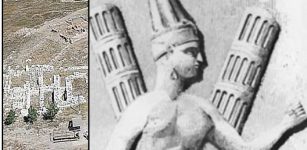 Cuneiform Tablet Unearthed In Hittite City Samuha Refers To Love And War Goddess Sausga
Archaeology | Oct 2, 2023
Cuneiform Tablet Unearthed In Hittite City Samuha Refers To Love And War Goddess Sausga
Archaeology | Oct 2, 2023 -
 Two Rare Full-Sized Viking Burial Ships Uncovered In Sweden
Archaeology | Jul 5, 2019
Two Rare Full-Sized Viking Burial Ships Uncovered In Sweden
Archaeology | Jul 5, 2019 -
 Gengen Wer – Goose God Who Guarded The Celestial Egg Containing The Life Force In Egyptian Beliefs
Featured Stories | Apr 22, 2021
Gengen Wer – Goose God Who Guarded The Celestial Egg Containing The Life Force In Egyptian Beliefs
Featured Stories | Apr 22, 2021 -
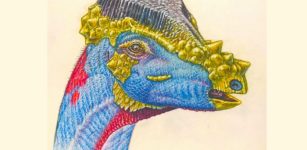 Newly Described Species Of Dome-Headed Dinosaur May Have Sported Bristly Headgear
News | May 24, 2023
Newly Described Species Of Dome-Headed Dinosaur May Have Sported Bristly Headgear
News | May 24, 2023 -
 On This Day In History: Mary Queen Of Scots Was Forced To Abdicate – On July 24, 1567
News | Jul 24, 2016
On This Day In History: Mary Queen Of Scots Was Forced To Abdicate – On July 24, 1567
News | Jul 24, 2016 -
 Genghis Khan – Conqueror Of Nations, Ruler Of People
Featured Stories | Feb 12, 2019
Genghis Khan – Conqueror Of Nations, Ruler Of People
Featured Stories | Feb 12, 2019 -
 Ancient Knowledge Of Other Worlds And An ‘Impossible’ Being That Shouldn’t Exist
Featured Stories | May 6, 2020
Ancient Knowledge Of Other Worlds And An ‘Impossible’ Being That Shouldn’t Exist
Featured Stories | May 6, 2020 -
 Why Did Vikings Burn And Bury Their Longhouses?
Ancient Traditions And Customs | May 3, 2017
Why Did Vikings Burn And Bury Their Longhouses?
Ancient Traditions And Customs | May 3, 2017 -
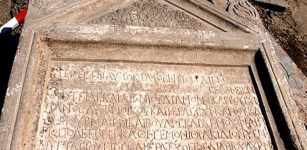 Third-Century Inscription Related To Dionysus Cult – Discovered
Archaeology | Jul 16, 2019
Third-Century Inscription Related To Dionysus Cult – Discovered
Archaeology | Jul 16, 2019 -
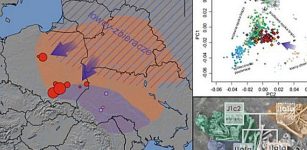 Great Migrations Took Place In Poland And Ukraine In Bronze Age
Archaeology | Sep 8, 2023
Great Migrations Took Place In Poland And Ukraine In Bronze Age
Archaeology | Sep 8, 2023 -
 Bones Of Giants Unearthed In Ancient Cave
Featured Stories | Sep 23, 2018
Bones Of Giants Unearthed In Ancient Cave
Featured Stories | Sep 23, 2018 -
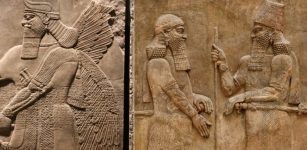 Treasure Trove Of Assyrian Kings Found In Tunnels Excavated And Plundered By Terrorists
Archaeology | Apr 20, 2020
Treasure Trove Of Assyrian Kings Found In Tunnels Excavated And Plundered By Terrorists
Archaeology | Apr 20, 2020 -
 Are We Really In A Sixth Mass Extinction?
News | Apr 11, 2023
Are We Really In A Sixth Mass Extinction?
News | Apr 11, 2023 -
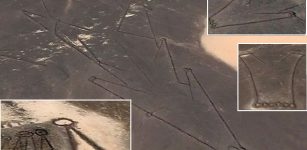 Thousands Unknown Ancient Structures Seen From Space: Puzzling Aerial Archaeology In The Middle East
News | Feb 15, 2014
Thousands Unknown Ancient Structures Seen From Space: Puzzling Aerial Archaeology In The Middle East
News | Feb 15, 2014 -
 Unclear Purpose Of Mysterious Rock-Cut City Of Petra – Was It A Fortress Or Sacred City?
Featured Stories | May 30, 2020
Unclear Purpose Of Mysterious Rock-Cut City Of Petra – Was It A Fortress Or Sacred City?
Featured Stories | May 30, 2020 -
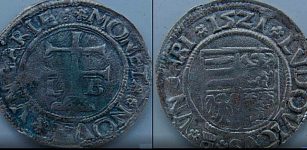 Treasure Coins Dated To 15th And 16th Century Unearthed In Historical Region Of Slovakia
Archaeology | Apr 17, 2019
Treasure Coins Dated To 15th And 16th Century Unearthed In Historical Region Of Slovakia
Archaeology | Apr 17, 2019 -
 Riddle Of An Ancient Underground City No-One Thinks Exist – Have We Misunderstood Plato? Part 1
Featured Stories | Sep 16, 2019
Riddle Of An Ancient Underground City No-One Thinks Exist – Have We Misunderstood Plato? Part 1
Featured Stories | Sep 16, 2019 -
 Oldest Scandinavian Ship-Burial Identified Re-Writes History – Amazing Find That Predates The Viking Age
Archaeology | Nov 14, 2023
Oldest Scandinavian Ship-Burial Identified Re-Writes History – Amazing Find That Predates The Viking Age
Archaeology | Nov 14, 2023



